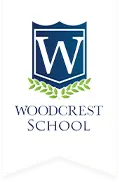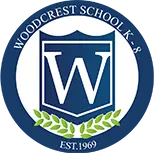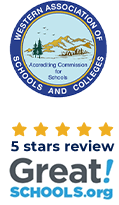Choosing Between Private and Public Schools in LA: What's the Better Choice for Your Child?
Choosing the right school for your child can shape their future in profound ways. In Los Angeles, families can choose between accessible, diverse public schools or private schools that offer personalized attention and specialized curriculums, each providing unique benefits to support your child’s success.
Let’s break down the key differences to help you determine which environment aligns best with your family’s priorities, values, and goals.

Key Differences Between Public School vs. Private Schools in LA
When choosing between public vs. private schools in the Los Angeles area, it’s important to consider several pivotal differences.
From funding sources to class sizes and educational approaches, these factors can significantly influence a student’s learning experience. To help navigate this decision, we’ve compiled a Venn diagram highlighting the primary distinctions between public schools and private schools in LA, as well as what similarities they have.
Comparative Analysis of Public and Private Schools in Los Angeles
When considering schooling options in Los Angeles, CA, it’s beneficial to examine specific attributes of public and private institutions. Each offers unique advantages, whether it’s the accessibility of public schools or the tailored education of private schools. Let’s delve into a detailed comparison to help you identify which factors matter most to your educational journey.
| Aspect | Public Schools | Private Schools |
|---|---|---|
| Cost | Free | Tuition-based, averaging $15,000 - $30,000 annually |
| Curriculum | Standardized | Customized |
| Class Size | Larger (average 25-30 students per class) | Smaller (average 12-15 students per class) |
| Teacher Credentials | State-certified | Varied requirements |
| Extracurriculars | Wide availability and variety | Varies by school, often diverse offerings |
| Diversity | Highly diverse demographics | Varies, often less diverse |
| Access | Widespread geographic availability, public transportation accessible | Less widespread, varied transportation options |
| Public Schools | Private Schools |
|---|---|
| ✅ Cost-effective: Funded by tax dollars, no tuition fees. | ✅ Smaller Class Sizes: Personalized attention and tailored instruction. |
| ✅ Diverse Environment: Exposure to a variety of backgrounds and cultures. | ✅ Specialized Curriculum: Focuses on educational philosophies (e.g., STEM, Montessori). |
| ✅ Extracurricular Variety: Large student body provides many activity options. | ✅ Highly Qualified Teachers: Educators with expertise in specialized subjects. |
| ✅ High Accessibility: Public schools are available in nearly every neighborhood. | ✅ Superior Resources: Modern technology and facilities due to better funding. |
| ❌ Larger Class Sizes: Limited individual attention for students. | ✅ Expanded Extracurriculars: Opportunities in arts, sports, and niche clubs. |
| ❌ Budget Constraints: Outdated facilities and fewer resources. | ✅ High Parent Involvement: Strong community and collaboration with families. |
| ❌ Overwhelmed Teachers: Educators may be stretched thin. | ✅ Emphasis on Academic Excellence: Higher college acceptance rates. |
| ❌ One-Size-Fits-All Curriculum: May not address individual learning styles. | ✅ Networking Opportunities: Connections with influential families and professionals. |
| ❌ Inconsistent Quality: Depends on district funding and local tax revenues. | ✅ Strong Focus on Character Development: Values-based education. |
| ❌ Limited Advanced Placement (AP): Fewer programs for gifted students. | ✅ Safer Environment: Stricter admission policies and security resources. |
| ❌ Overcrowded Classrooms: Reduced focus on safety and student needs. | ❌ Tuition Costs: Many private schools offer financial aid or tuition assistance. |
| ❌ Limited Parental Involvement: Less opportunity for direct engagement. | ❌ Less Diversity: Smaller student bodies can limit diversity in some regions. |
| ❌ Bureaucracy and Red Tape: Slower decision-making due to administration. | ❌ Academic Pressure: Higher standards may cause stress, though many offer tutoring. |
| ❌ Declining Test Scores: Some public schools struggle to meet benchmarks. |
Pros & Cons of Public and Private Schools
When it comes to choosing the right educational path for your child, weighing the advantages and disadvantages of private and public schools becomes essential. Each option brings unique benefits and challenges and understanding these can guide your decision.
While private school advantages include a more personalized education experience with numerous resources, small class sizes, and innovative curricula, they come at a considerable cost and might lack diversity.
On the flip side, public school advantages include offering a more standardized set of resources and promote inclusivity, but they may struggle with larger class sizes and limited funding. Therefore, if budget permits and personalized education experience is your priority, private schools may offer more advantages.

Debunking Common Misconceptions About Private Schools
When comparing public vs private schools, many myths about private schools can cloud your decision-making process. Some assume private schools are exclusive to the wealthy, while others question their diversity or accountability. To help you make an informed choice, let’s address some common misconceptions.
Misconception 1: Private schools are only for the wealthy
Private schools are often associated with high tuition costs, but many offer financial aid, scholarships, and sliding-scale tuition to make education accessible to a broader range of families. According to the National Association of Independent Schools (NAIS), nearly 25% of students in private schools receive some form of financial assistance. This helps dispel the notion that private education is only an option for affluent families.
Misconception 2: Private schools are less diverse
While diversity varies across private schools, many actively prioritize creating inclusive environments. Schools often recruit students from diverse socio-economic, cultural, and geographic backgrounds. Programs and initiatives to encourage diversity are becoming more common, ensuring private schools are reflective of the broader society in many areas.
Misconception 3: Private school education is superior to public education
The idea that private schools are inherently better than public schools oversimplifies the issue. The quality of education depends on the specific school and the student’s needs. Private schools often have smaller class sizes and specialized curriculums, but public schools may offer broader extracurricular activities and a more diverse peer environment. The best choice depends on what aligns with your child’s goals and interests.
Misconception 4: Students in private schools don’t face disciplinary issues
It’s a myth that private schools are immune to behavioral problems. While smaller class sizes and more individualized attention may help prevent some issues, private schools still face challenges in addressing discipline. However, their ability to set stricter codes of conduct and engage parents directly often leads to proactive solutions tailored to their communities.
Misconception 5: Private schools lack qualified teachers
Some believe private school teachers are less qualified than public school educators, but this is far from the truth. Many private school teachers hold advanced degrees and specialized certifications. Additionally, private schools often encourage ongoing professional development to ensure their staff stays current with best practices and emerging educational trends.
Misconception 6: Private schools are free from oversight and accountability
Private schools are not exempt from accountability. They must meet accreditation standards set by independent bodies and often undergo regular evaluations to ensure quality. Many also voluntarily adhere to national benchmarks to maintain credibility and competitiveness. This oversight ensures private schools maintain high educational standards and foster trust with families.
Debunking these common misconceptions highlights that private schools are more accessible, diverse, and accountable than many realize. Understanding these realities allows you to make an informed decision based on what best suits your child’s educational needs and goals.
Making the Right Choice for Your Child
As you evaluate your options between public and private schools, it’s crucial to explore the unique advantages each can offer. Public schools often present a more diverse social environment, but if you’re seeking a particular curriculum or smaller class sizes, a private institution like Woodcrest School in Tarzana, CA, could be the ideal choice. At Woodcrest School, we focus on nurturing each child’s potential through individualized attention and a tailored educational experience. Both public and private schools have their strengths, but choosing one that aligns with your child’s individual needs and your family’s goals is key.
Frequently Asked Questions
Private schools are independently funded and may have religious affiliations, offering unique curricula, while public schools are government-funded, adhering to state educational guidelines.
Public schools are primarily funded through local, state, and federal government taxation, whereas private schools rely on tuition fees, donations, and endowments.
Yes, many private schools provide scholarships and financial aid to make education accessible to a more diverse student body, regardless of financial background.
Public schools are mandated to provide resources and support for students with special needs, while private schools may vary widely in their offerings and accommodations, often necessitating inquiry.
College preparation can vary; many private schools emphasize rigorous academic programs, yet numerous public schools offer advanced placement courses and college counseling.


